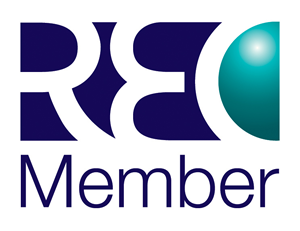Headhunting Vs Traditional Recruitment: What’s the Difference And When Does It Matter?
There’s a lot of confusion about what headhunting really involves. To some, it’s just recruitment with a sharper edge; to others, it’s a mysterious process reserved for executive-level hires. But when you start to look closely, the differences between headhunting and traditional recruitment are significant and often misunderstood.
What is headhunting?
Headhunting is a highly targeted, research-led approach to hiring that focuses on individuals who are often not actively looking for a new role. It involves identifying and engaging people who are already thriving in their current positions – professionals who may not be visible through traditional hiring channels. These approaches are rarely cold; more often, they come through established networks, industry groups, peer recommendations or long-standing professional relationships.
The headhunter is seen less as a salesperson and more as a trusted advisor, brought in to solve a specific challenge with discretion, insight and deep sector knowledge. It’s a slower, more strategic process, where trust and timing are everything.
Why do people think headhunting and recruitment are the same?
It’s easy to assume headhunting and traditional recruitment are just variations of the same process. Both aim to place the right person in the right role. But the journey to that result can look very different.
Traditional recruitment is highly effective at identifying and engaging active jobseekers – people who are motivated and ready to move. The best recruiters in this space are proactive, strategic and resourceful. They build talent pipelines, engage passive candidates and move quickly to connect clients with relevant prospects.
Headhunting, by contrast, is often more bespoke and long-term in nature. It starts not with applications or open calls, but with identifying a specific individual – sometimes one not even contemplating a move. It’s common for conversations to begin with someone who isn’t ready now, but who might be the perfect fit six or 12 months down the line. The headhunting process is often less about availability and more about alignment, future potential and ongoing dialogue.
When do we use headhunting?
Headhunting is typically the right choice when you need to:
- Fill senior leadership or C-suite roles
- Hire for niche, highly technical or strategic roles
- Keep the process confidential or discreet
- Access passive candidates who aren’t on job boards
- Make a critical or business-defining hire
It’s often used in sectors where the talent pool is small, demand is high and timing really matters.
What does headhunting look like?
From the outside, it may look like magic – but there’s a lot going on behind the scenes.
Headhunting typically includes:
- Deep research into the target market and competitors
- Mapping and identifying ideal candidates
- Approaching individuals directly, always discreetly and respectfully
- Building relationships and understanding motivations
- Acting as a trusted go-between for both client and candidate
- Managing the process through to offer and beyond
In many cases, the headhunter already knows the people they’re approaching – perhaps having worked with them before, stayed in touch, or received a personal recommendation from someone in their network.
Why is headhunting the long game?
Headhunting is about aligning the right blend of skills, experience, culture fit, aspirations and timing. In many cases, conversations with potential candidates unfold over months, or even years, before the right opportunity comes along.
For those in senior roles, it often starts with a quiet approach: “Let’s talk about what might be next, when the time is right.” That’s the essence of headhunting. It’s not a transaction. It’s a conversation built on trust, timing and mutual understanding.
What are the benefits?
Headhunting offers access to hard-to-reach talent – individuals who aren’t actively applying elsewhere but might consider moving for the right opportunity. Hiring managers receive a carefully curated shortlist of candidates who genuinely match the role’s requirements.
Alongside this, advisory support often plays a key role: providing insight on shaping the position, setting the right package, and navigating market dynamics, as well as handling sensitive negotiations that wouldn’t typically arise in a standard recruitment process. Additionally, headhunting allows for brand protection and discretion – managing the process quietly and professionally, especially important when replacing someone or exploring new leadership directions.
The considerations
Headhunting takes longer, remember, it’s a long game, and is typically suited to a specific subset of roles. It usually commands a higher fee, so it’s worth weighing the value of getting it right (and the cost of getting it wrong). It’s not always the best approach. For many roles, especially where there’s a healthy and active talent pool, traditional recruitment is faster, more scalable and highly effective.


